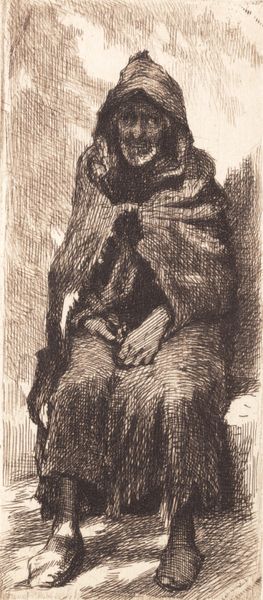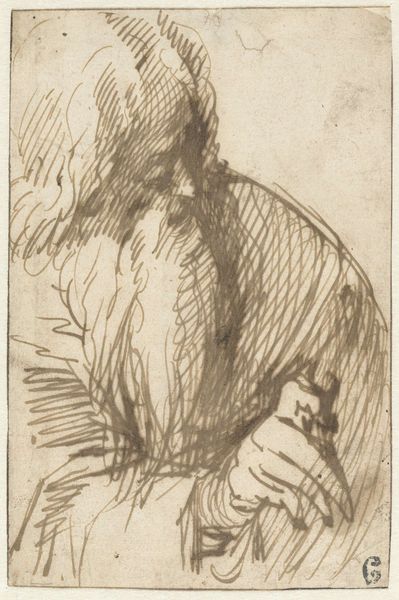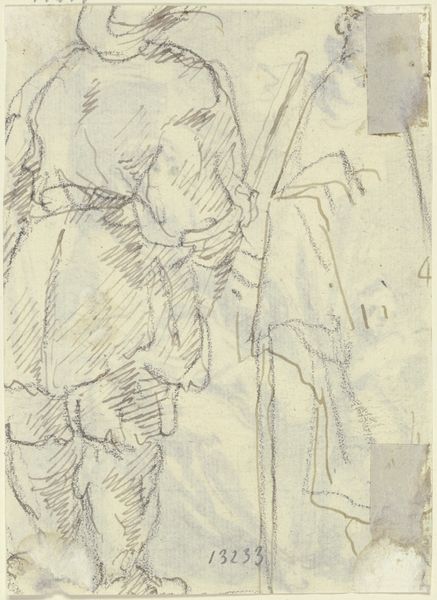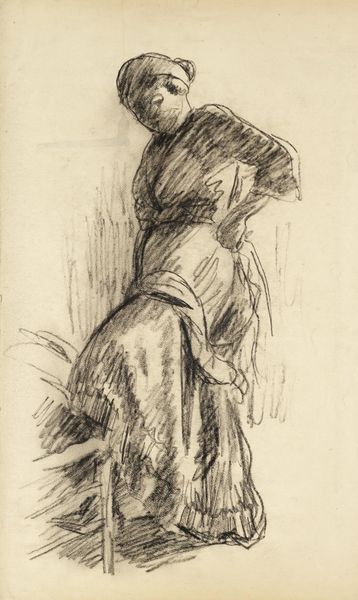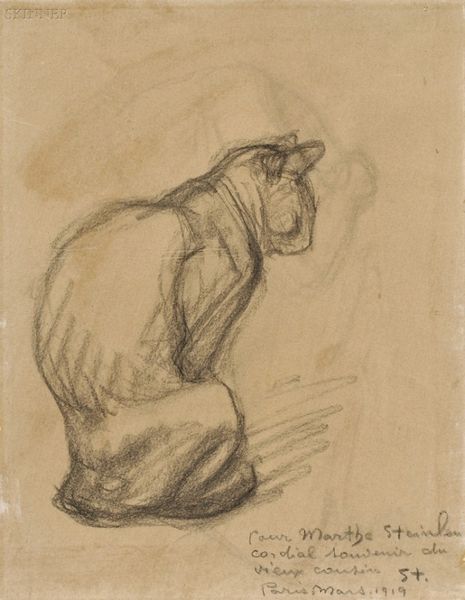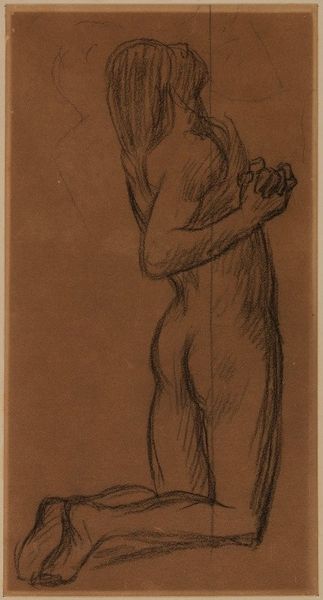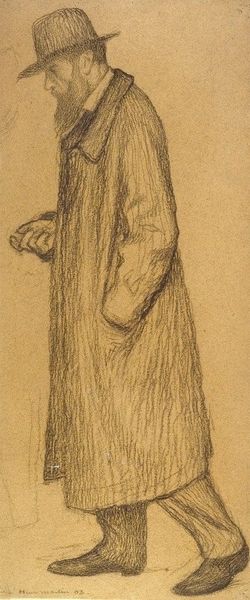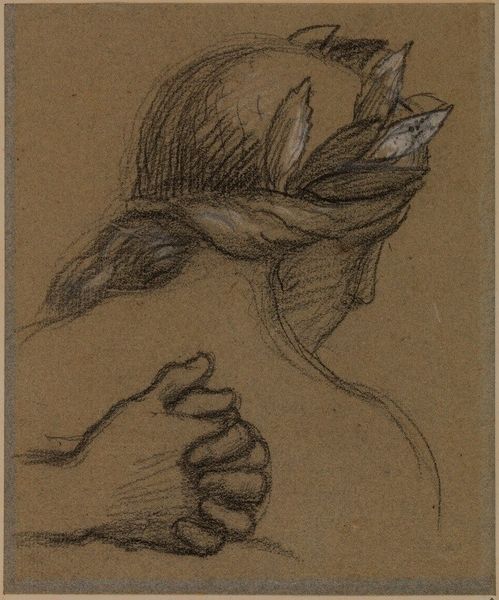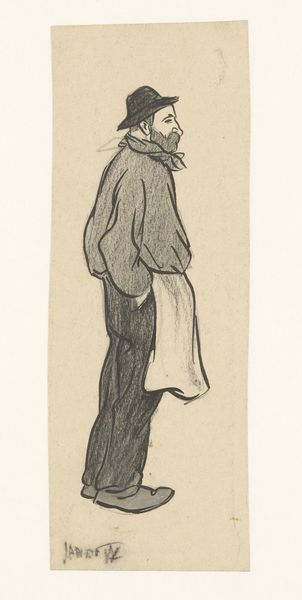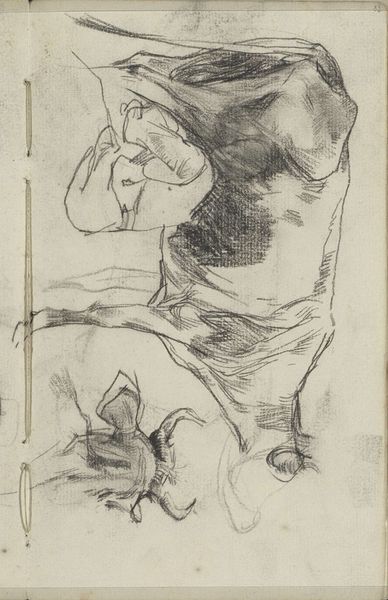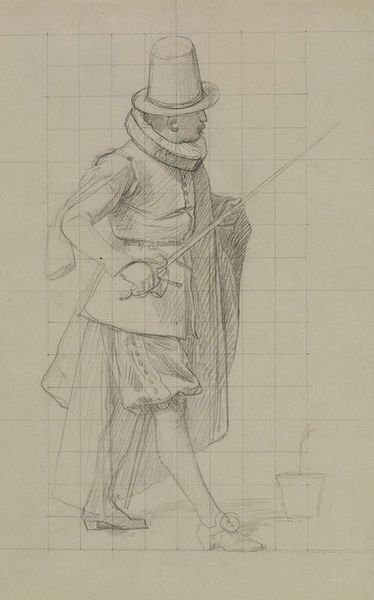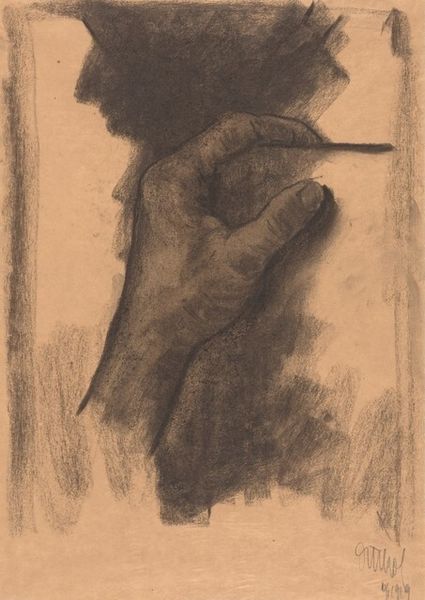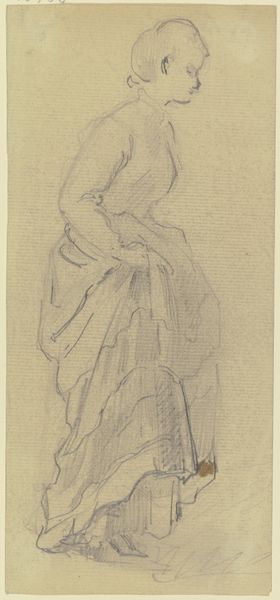
drawing, pencil
#
portrait
#
pencil drawn
#
drawing
#
figuration
#
pencil
#
realism
Copyright: Public Domain: Artvee
Curator: Here we have "Workman on a Ladder," a pencil drawing by Henri Martin. What strikes you about it? Editor: The texture is so raw, immediate. You feel the grit of the ladder, the weight of that basket he's carrying. It speaks of labour, doesn't it? Of physical exertion. Curator: Absolutely. Martin, despite being associated with luminism, often depicted scenes of rural life. These were sometimes commissioned to be overtly politically aligned. Think of the state’s complex relationship with the labour movement, for instance. Editor: Right. The state certainly needed imagery that seemed aligned with the labour movement and this portrayal offers more than romanticism—the strain is evident. Look at how Martin uses the pencil, almost like he’s sketching the very fibres of the man’s muscles. You can almost smell the sweat and sawdust. Curator: I agree, and it resonates with his broader interest in depicting the lives of working-class people. And he does it in a very realistic style and the lines carry that through. The question is always if that aligns or clashes with their own lives and goals. Editor: Do you mean if the man saw himself in the artwork, he would think it resembled or diminished him? I think that's it! It dignifies the worker. The sketch format adds authenticity to this and suggests something about its commission or lack thereof. Curator: Yes, its medium adds to that conversation. His decision to use pencil is intriguing, lending an immediacy. One might think about the economics that afforded these kind of renderings rather than oils or pigment and this speaks to its accessibility. Editor: It makes you wonder, what exactly is in that basket? What kind of labor does he engage in? The sketch gives you space to imagine the specifics of his daily grind. Curator: Well said, and by bringing to bear historical insights we realize Martin was grappling with representation and socio-economic forces well beyond the aesthetic canvas. Editor: And I believe centering that worker is crucial. It emphasizes the materiality of their existence and daily processes as the essence of the artwork. Curator: I agree and that adds a layer to its history that only context can offer! Editor: I find it fascinating that such a simple rendering opens into social concerns about labor itself and representation today!
Comments
No comments
Be the first to comment and join the conversation on the ultimate creative platform.
